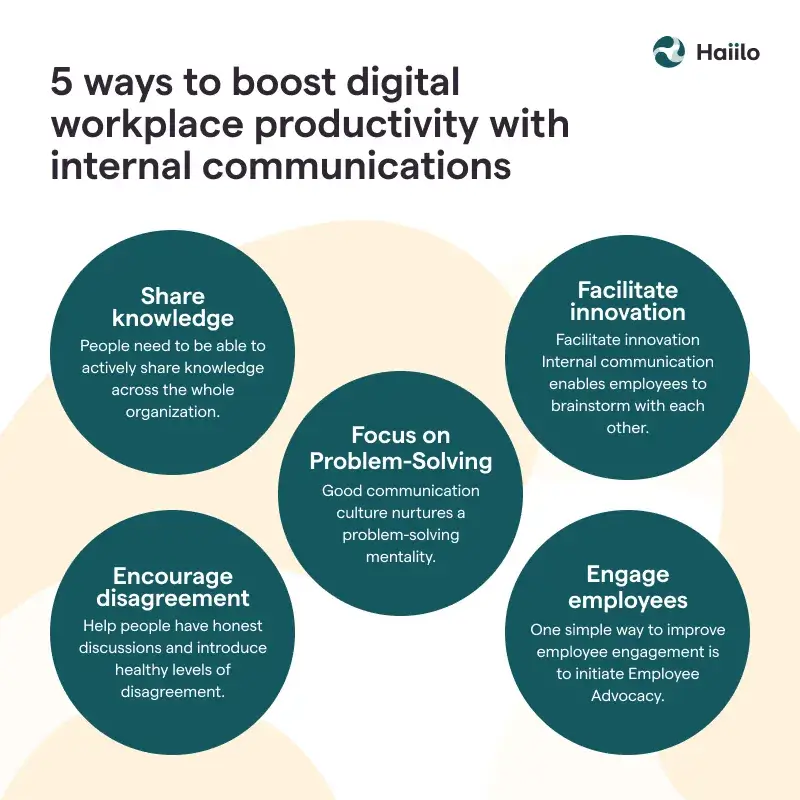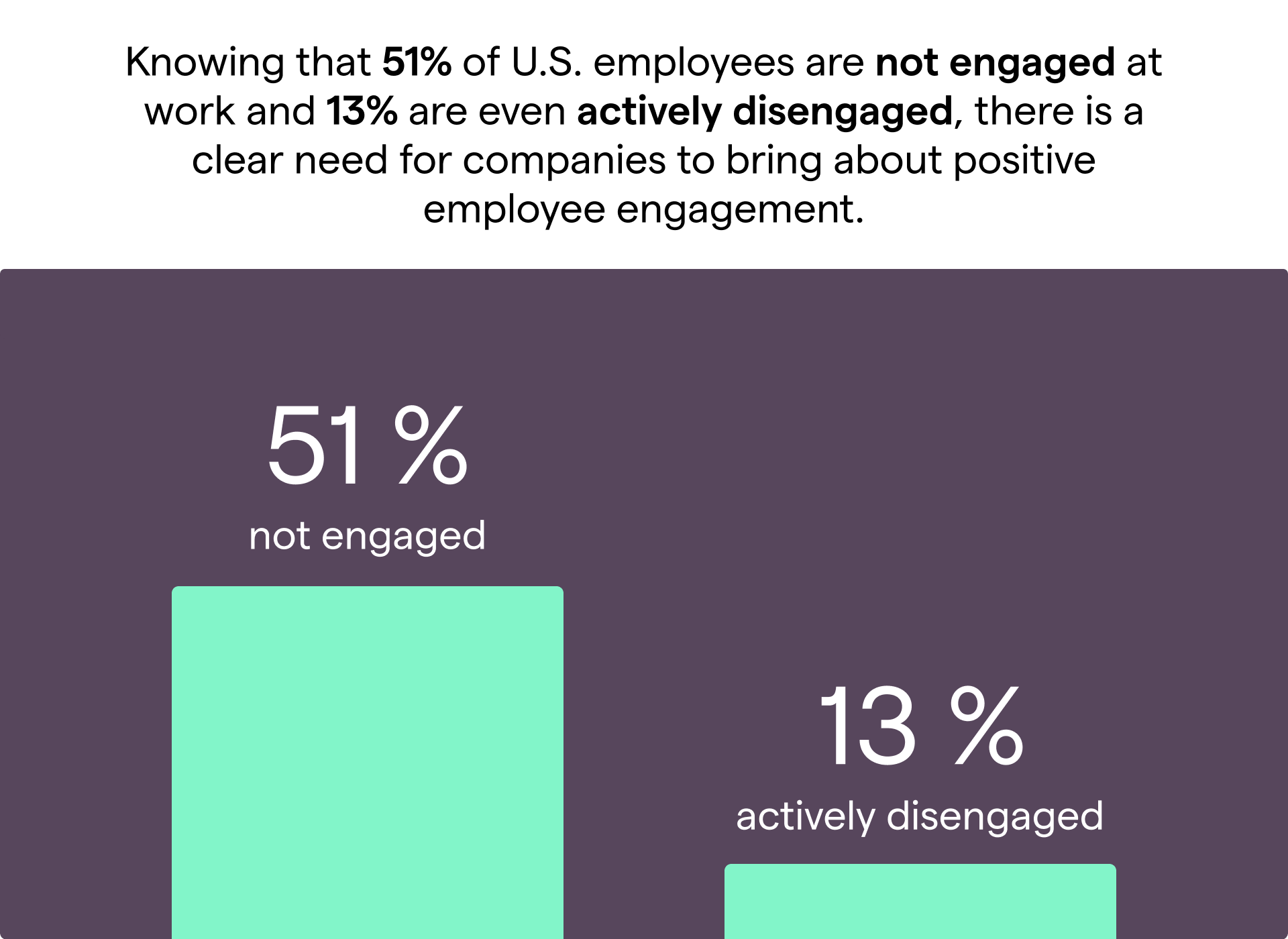Employee relations (a.k.a. employee relationship management) have a direct influence on employee satisfaction and engagement. Therefore, many companies today invest more resources to improve employee relations and keep their workplaces healthy.
In this blog, we will define employee relations, explain the difference between employee relations and employee relationship management, and describe why they are important for organizational success.
- What Are Employee Relations?
- Employee Relations vs. Employee Relationship Management (ERM)
- 7 Reasons Why Employee Relations Are Important
- The State of Employee Relations
- How to Implement an Employee Relations Plan
- What Do Employee Relations Professionals Do
- Employee Relations Specialist Duties and Responsibilities
What Are Employee Relations?
Employee relations is a term used to describe relations between employers and employees. Today’s organizations are striving to become more agile, faster, and transparent. For that reason, the focus on employee communications is bigger than ever before.
The main goal of every employee relations strategy is to improve relationships and collaboration in the workplace.
Good leadership is ranked as one of the most important factors that attract new candidates and keep existing employees. In that sense, employee relations often focus on helping line managers truly connect with their employees.
Strengthen employee relations with proper internal comms.
Employee Relations vs. Employee Relationship Management (ERM)
While employee relations is a term used to describe employee relationships within an organization, employee relationship management is used to describe the process of creating good relations in the workplace.
Employee relationship management happens when an employer manages the relationship between all employees in the company. It covers the entire employee journey – it starts from an employee’s first day and lasts until they leave the company.

Good employee relationship management goes far beyond whether or not you and your employees get along. Proper employee relationship management must include effective communication, employee engagement initiatives, a structured employee experience plan, and the implementation of the right tools and technology.
📹 Before we dig deeper into the importance of employee relations, check out our Masterclass about why every organization needs a proper internal communications strategy.
7 Reasons Why Employee Relations Are Important
Companies with good employee relationships enjoy many benefits. In general, it is easier for them to engage, motivate, understand and keep their employees.
Here are just a few benefits of building a positive employee relations workplace.
Employee engagement
According to research about employee engagement, 90% of leaders understand how important employee engagement is. However, only 50% of them know how to address this issue.
Here, employee relations play a crucial role. It has been proven that companies with better employee communications have much higher rates of employee engagement.
Here are a few tips to improve employee communications to drive better employee engagement include:
- Share, review and update employee expectations.
- Encourage open communication to identify obstacles and issues.
- Don’t neglect consistent feedback and recognition.
- Encourage discussion and sharing of thoughts.
Why should you care about employee engagement at your workplace, you may ask?
Employee satisfaction
Employee engagement is often related to employee satisfaction. Less engaged employees are less satisfied. Poor employee relations can be one of the main causes for that.
Moreover, 65% of US employees say that communications by their employer impact job satisfaction. 45% of them say that their employer does not do a good job communicating with employees.
Employee productivity
Employee satisfaction and engagement boost employee productivity. Companies with well-structured employee relations enjoy higher productivity, revenues, and profits. Moreover, organizations with highly engaged employees have an average 3-year projected revenue growth that is 2.3 times greater than companies with less engaged teams.
If your employees know exactly what their goals are and if you give them constant feedback on their work, they will work harder towards achieving their goals.
Check out these 5 tips to improve employee productivity with better communications.

Employee retention
High employee turnover is one of the biggest problems companies face today. The cost of an employee leaving is significant. Therefore, many employees try to avoid that expense.
Employee retention can be improved in many ways. Employee relationship management is one of them.
Employees who feel like they don’t know what is going on in the company feel frustrated and isolated. As a result, they feel insecure and often consider new job opportunities.
Employee advocacy
Employee advocacy is a benefit many companies are trying to achieve. The ability to reach employees’ connections and use your company’s social capital to its full potential can have a big impact on the company’s visibility, brand awareness and productivity.
In order to achieve employee advocacy, employers have to be ready to improve employee relations. They need to keep employees in the loop and share important content.
Employee experience
Similar to employee satisfaction, good employee experience is one of the biggest proofs of healthy workplace culture.
To deliver a good employee experience, employers need to be ready to improve the way they communicate with employees. Open and transparent communication helps employees feel involved, which often leads to higher employee engagement.
In contrast, poor employee communications lead to insecurity, lack of engagement, and honesty in the workplace.
Employee empowerment
Millennials and younger generations want to be involved in many aspects of a business. They want to have a certain level of decision-making power.
This is called employee empowerment. It involves giving employees responsibility and autonomy to manage their own work and make decisions to achieve their own goals.
In order to empower your employees, you need to have good employee relations and communications strategies.
For employees to feel empowered, they need to understand clearly what your company’s mission and vision are. Also, they have to be able to understand how their work contributes to the overall business success.
Trust is crucial for successful employee empowerment. Managers who trust their employees and communicate the company’s strategy and goals regularly often have no problems giving more power to their employees.
The State of Employee Relations
CIPD research in 2022 shows that employers are mainly positive about the employment relations climate in their organization, with 87% describing relations between managers and employees as ‘very good’ or ‘good’ and just 3% as ‘poor’ or ‘very poor’.
The survey asked employers whether or not they thought the relationship between management and employees had changed in their organization over the past two years. Almost half (46%) said it had remained the same. Almost three in ten (28%) said the relationship is now more positive while just 15% said it was more negative.
These results are quite positive and, that’s due to employers investing in employee wellbeing programs, caring about workplace trust, and building a sense of belonging in the workplace. Furthermore, many organizations are implementing new initiatives to build and nurture engaging employee communities where employees are connected, respectful to each other, and can easily collaborate on projects.
How to Implement an Employee Relations Plan
The very first step towards planning and implementing a successful employee relations strategy is to have a set of clearly written policies.
Employee relations policies should describe the employer’s philosophy, rules, and procedures for handling employee-related matters and resolving issues in the workplace.
In addition, it is important to understand that employee relationship management programs are not one-size-fits-all solutions.
What works in a company with 100 employees in the United States may not work for a company of 5000 employees in China. In other words, employee relations programs vary based on company size, location, industry, culture, and many other factors.
However, there are a few characteristics of every good employee relations plan:
- Help employees understand your mission and vision
- Show them how their job aligns with your mission and vision
- Communicate with employees frequently
- Give employees feedback
- Ask for feedback using regular employee surveys
- Implement diversity and inclusion initiatives
- Reward them for good work
What Do Employee Relations Professionals Do
Having an Employee Relations Professional, especially in large companies, is critical for better employee communications.
These professionals are either a part of communications or HR departments. Their main job is to keep employees informed and to ensure that company policies and procedures are followed.
Employee Relations Specialist Duties and Responsibilities
Here are some of the most important duties and responsibilities of Employee Relations/Relationship Managers and Specialists:
- Manage employee files
- Share company news
- Share policies and procedures updates
- Monitor compliance with policies and procedures
- Recruit employees
- Assist in the hiring processes
- Encourage employees for advocacy
- Manage relationships between employer and employees
- Collaborate in employee exit processes
- Assist in writing employee handbook










